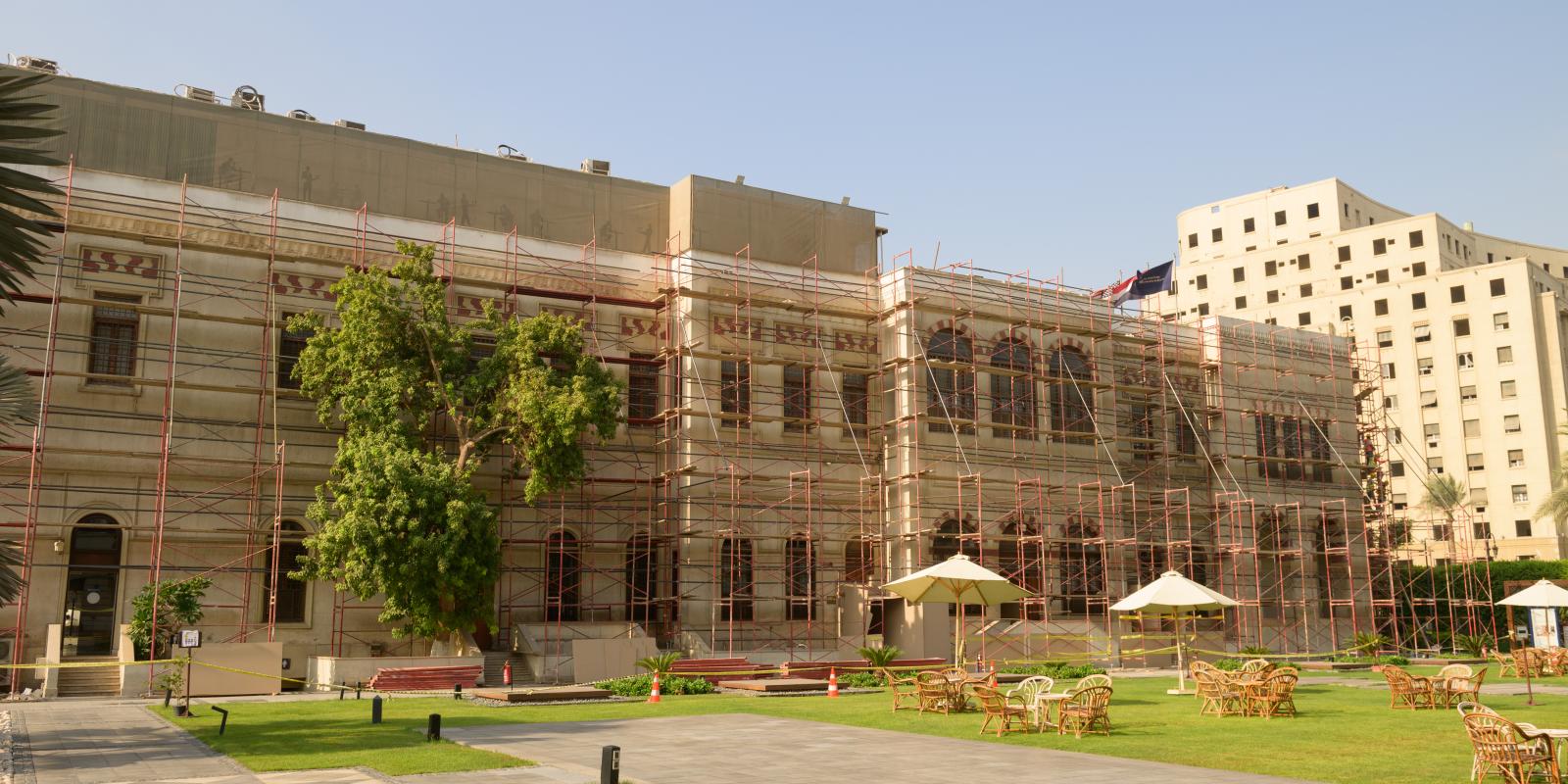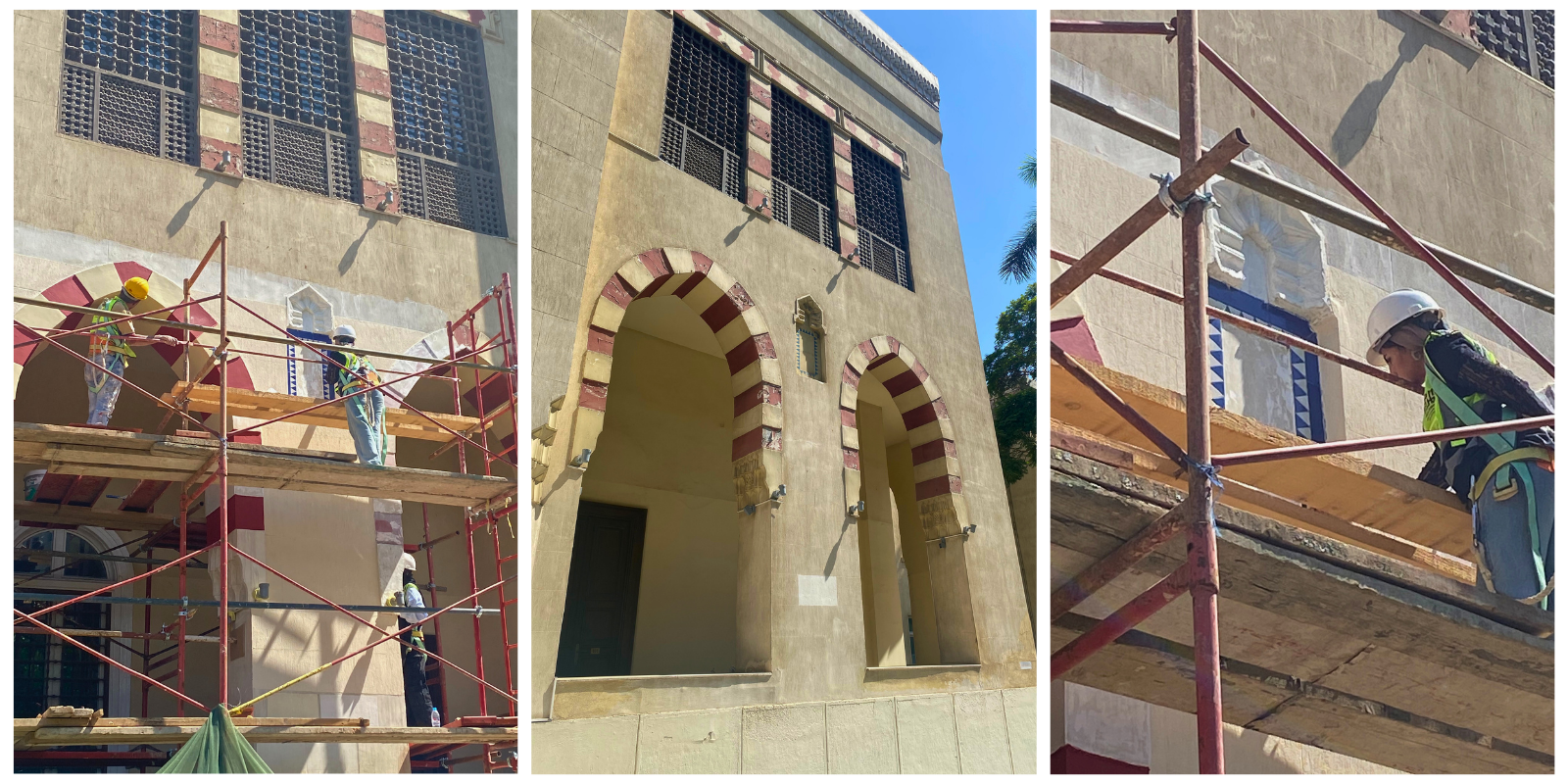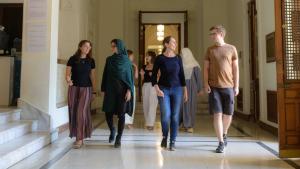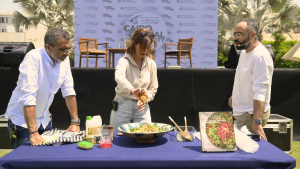
Historic Palace Facade in AUC Tahrir Square Undergoes Restoration
If you’ve passed by AUC Tahrir Square recently, you may have noticed scaffolding surrounding the University’s historic palace, the oldest building in AUC Tahrir Square that is more than 150 years old. That’s because the palace facade is being restored in collaboration with Egypt’s Ministry of Tourism and Antiquities.
“The palace witnessed AUC's growth and evolution over time and key events since the University opened in 1919,” said Khaled Tarabieh, University architect and associate professor of sustainable design in the Department of Architecture. “As time went by, many areas on the main facade deteriorated and lost their original look and paint colors. The purpose of this project is the restoration of the palace’s facade, windows and paint, as well as fixing any deteriorated areas. Specialized restoration consultants and contractors are involved in cooperation with Egypt’s Ministry of Tourism and Antiquities.”
“The Khairy Pasha Palace is recognized not only for its architectural value but also its historic and symbolic significance.”
Built in the mid-to-late 1800s, the palace was named after Khairy Pasha, who served as Egypt’s minister of education during Khedive Ismail’s rule. Ismail was instrumental in reforming and modernizing Egypt’s education system, and his palace came to symbolize the country’s modernization efforts during the Khedival period. Since 2007, the palace has been listed on Egypt’s National Register for Heritage Buildings, which includes important historical monuments from Egypt’s ancient, Greco-Roman, Jewish, Coptic, Islamic and modern eras.
“The Khairy Pasha Palace is recognized not only for its architectural value but also its historic and symbolic significance,” said Dalila ElKerdany, the project’s consulting architect, Cairo University professor and adjunct faculty in AUC’s Department of Architecture since 2011. “The palace has played a crucial role in Egypt’s educational history and serves as a symbol of the integration of European and local architectural styles in the 19th century. It features intricate facades and grand interiors, typical of the luxurious elite residences during the time.”
The project involves restoring the exterior elevations visible from the streets, followed by the rest of the elevations. “Through decades of existence, the façade experienced deterioration, such as voids and gaps on the surface that require proper filling; disappearance of the the building’s original colors and materials, such as mosaic frame ornaments that were buried under layers of paint; broken ornaments that are being skillfully restored,” said Tarabieh.
"Through the decades, the façade has experienced deterioration, such as voids and gaps on the surface, disappearance of the the building’s original colors and materials, and breakage of ornaments that are being skillfully restored.”
An analysis of the paint and facade stone patterns using historical photographs is also underway to restore the palace to its original state, complemented by a first-of-its-kind comprehensive electronic documentation of the building. “AUC is an important and prestigious institution, not only in Egypt but the whole Middle East, so it is important to show the glamor of the original palace the University acquired,” said ElKerdany.
Initially, the palace served as a government building, housing the Ministry of Education (formerly the Ministry of Public Instruction). It was then briefly used as a cigarette factory before becoming a location for holding classes affiliated to the country’s first university, the Egyptian University (now Cairo University), in its early years. “This way, the Khairy Pasha Palace has always been associated with the early stages of Egypt's higher education movement,” said ElKerdany. “By eventually becoming part of AUC, the palace has preserved its historic legacy as a hub for education and intellectual exchange, continuing AUC’s tradition as a center of academic excellence.”
Find out more about AUC’s historic palace.





